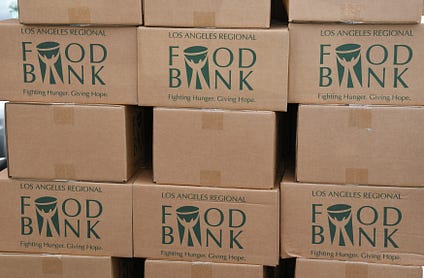From shelter to stability: Isaac’s journey toward financial empowerment – Youth Villages

Report on Empowering At-Risk Youth Through Financial Literacy in Alignment with Sustainable Development Goals
1.0 Subject Profile and Background
This report details the case of Isaac, a young adult who demonstrated significant resilience in the face of systemic challenges that directly correlate with several Sustainable Development Goals (SDGs). His early life was characterized by profound instability, providing a critical context for understanding the impact of targeted support programs.
2.0 Challenges in Relation to Global Development Targets
The subject’s formative years were marked by circumstances that contravene the foundational principles of the SDGs, particularly those aimed at ensuring stability and opportunity for all children and youth.
- Housing Instability (SDG 1, SDG 11): The subject experienced homelessness on five separate occasions and resided in four different shelters, beginning at the age of eight. This chronic lack of safe and stable housing is a direct challenge to SDG 1 (No Poverty) and SDG 11 (Sustainable Cities and Communities).
- Educational Disruption (SDG 4): Constant relocation resulted in attendance at five elementary schools, six middle schools, and two high schools. This disruption severely impacts the continuity and quality of education, a core tenet of SDG 4 (Quality Education).
- Premature Economic Responsibility (SDG 8): At age 11, the subject assumed responsibility for completing complex administrative tasks, such as SNAP enrollment, a burden that falls outside the scope of decent work and economic well-being for a minor.
3.0 Programmatic Intervention and SDG Alignment
The subject’s engagement with Youth Villages’ financial literacy program serves as a model for addressing inequalities and promoting sustainable development. The program’s objectives and outcomes align with multiple SDGs.
- SDG 1: No Poverty & SDG 10: Reduced Inequalities: The program directly tackles poverty by equipping youth transitioning from foster care—a demographic disproportionately affected by financial hardship—with essential skills. It aims to reduce the inequality gap between these individuals and their peers by providing knowledge in budgeting, banking, and tax filing.
- SDG 4: Quality Education: The initiative provides vital, lifelong learning opportunities outside the formal education system. As the subject stated, “The financial literacy program provided me with critical information that set me up to make good financial decisions.” This practical education is crucial for achieving financial independence.
- SDG 8: Decent Work and Economic Growth: By fostering financial stability and confident decision-making, the program lays the groundwork for participants to secure and maintain decent work. The subject’s ability to leave a hazardous job for a better one, and his current pursuit of a degree in computer engineering, exemplifies progress toward sustainable economic self-sufficiency.
4.0 Outcomes and Institutional Partnerships
The intervention has yielded measurable positive outcomes for the subject, demonstrating the efficacy of targeted support in fostering upward mobility and achieving long-term stability.
Key Outcomes:
- Successful enrollment and attendance at Johnson C. Smith University.
- Acquisition of practical financial skills, leading to debt repayment and savings.
- Enhanced capacity to make informed decisions regarding employment and personal finance.
Institutional Collaboration (SDG 17: Partnerships for the Goals):
The success of these interventions is underpinned by strategic partnerships. Youth Villages in North Carolina collaborates with the North Carolina Department of Health and Human Services to deliver a suite of services. This partnership model is essential for scaling impact and building stronger, more resilient communities, thereby advancing the collective mission of the Sustainable Development Goals.
Analysis of Sustainable Development Goals in the Article
1. Which SDGs are addressed or connected to the issues highlighted in the article?
- SDG 1: No Poverty: The article directly addresses poverty through the protagonist Isaac’s experiences with homelessness and living in shelters with his mother, who was searching for work. His determination to become “financially responsible” to avoid such situations in the future is a central theme.
- SDG 4: Quality Education: The article highlights the importance of education in two ways. First, Isaac is pursuing higher education as a university freshman. Second, the Youth Villages’ financial literacy program provides crucial non-formal education on skills like budgeting and taxes, which are essential for lifelong learning and stability.
- SDG 8: Decent Work and Economic Growth: The narrative touches upon employment challenges, such as Isaac’s mother searching for work and Isaac himself leaving a stressful job for a better one. The ultimate goal for Isaac, supported by the program, is to graduate, secure a “good job,” and achieve “financial independence,” contributing to economic growth.
- SDG 10: Reduced Inequalities: The article points out a specific inequality faced by young people from foster care, who “often lack basic financial literacy skills” compared to their peers. The Youth Villages program is designed to reduce this gap by empowering this vulnerable group with the tools for economic inclusion.
- SDG 11: Sustainable Cities and Communities: The core issue of housing instability is prominent in Isaac’s story, as he “experienced homelessness five times and lived in four different shelters.” This directly relates to the goal of ensuring access to adequate and safe housing for all.
2. What specific targets under those SDGs can be identified based on the article’s content?
-
Under SDG 1 (No Poverty):
- Target 1.2: By 2030, reduce at least by half the proportion of men, women and children of all ages living in poverty. The program aims to break the cycle of poverty and homelessness for vulnerable youth like Isaac, helping them build financial stability.
-
Under SDG 4 (Quality Education):
- Target 4.4: By 2030, substantially increase the number of youth and adults who have relevant skills… for employment, decent jobs and entrepreneurship. The financial literacy program directly provides relevant skills such as “budgeting, opening bank accounts or filing taxes” to empower young adults.
-
Under SDG 8 (Decent Work and Economic Growth):
- Target 8.6: By 2020, substantially reduce the proportion of youth not in employment, education or training. The program supports youth aging out of foster care, a group at high risk, to stay in education (like Isaac) and successfully transition to stable employment.
-
Under SDG 10 (Reduced Inequalities):
- Target 10.2: By 2030, empower and promote the social, economic and political inclusion of all… irrespective of… economic or other status. The program specifically targets former foster youth, a vulnerable group, to empower them and promote their economic inclusion.
-
Under SDG 11 (Sustainable Cities and Communities):
- Target 11.1: By 2030, ensure access for all to adequate, safe and affordable housing. The article’s focus on Isaac’s history of homelessness highlights the need for programs that create stability and prevent such housing crises for young adults.
3. Are there any indicators mentioned or implied in the article that can be used to measure progress towards the identified targets?
-
For SDG 1 (No Poverty):
- The article mentions that through the program, Isaac was able to “save money” and “pay off a debt.” These are direct indicators of improved financial health and a reduction in personal poverty. An implied indicator is the rate of program participants who avoid homelessness and maintain stable housing.
-
For SDG 4 (Quality Education):
- The acquisition of specific skills is an indicator. The article states the program teaches “budgeting, opening bank accounts or filing taxes.” Isaac’s ability to “talk to my mom about insurance” serves as a qualitative indicator of his increased financial knowledge. The number of participants mastering these skills would be a quantitative measure.
-
For SDG 8 (Decent Work and Economic Growth):
- The article implies progress by noting that Isaac is currently in higher education (“freshman at Johnson C. Smith University”) and employed (“found a better job, where I still work today”). An indicator for the program’s success would be the percentage of participants who are in education, training, or stable employment.
-
For SDG 10 (Reduced Inequalities):
- The empowerment of participants to “make confident decisions and build stability” is a key outcome. An indicator would be the number of former foster youth who successfully transition to financial independence compared to those without such support, thereby measuring the reduction in the inequality gap.
-
For SDG 11 (Sustainable Cities and Communities):
- The article’s narrative is built around Isaac’s past instability (“experienced homelessness five times”). A primary indicator of progress towards Target 11.1 would be a reduction in the incidence of homelessness among the youth served by the program.
4. SDGs, Targets, and Indicators Table
| SDGs | Targets | Indicators |
|---|---|---|
| SDG 1: No Poverty | 1.2: Reduce at least by half the proportion of people living in poverty. | Ability to save money and pay off debt; Reduced incidence of homelessness among program participants. |
| SDG 4: Quality Education | 4.4: Increase the number of youth and adults with relevant skills for employment. | Acquisition of financial literacy skills (budgeting, banking, taxes); Enrollment in higher education. |
| SDG 8: Decent Work and Economic Growth | 8.6: Reduce the proportion of youth not in employment, education or training (NEET). | Percentage of participants in stable employment or pursuing higher education. |
| SDG 10: Reduced Inequalities | 10.2: Empower and promote the social and economic inclusion of all. | Number of former foster youth achieving financial stability and making confident financial decisions. |
| SDG 11: Sustainable Cities and Communities | 11.1: Ensure access for all to adequate, safe and affordable housing. | Reduction in the rate of housing instability and homelessness for youth transitioning out of foster care. |
Source: youthvillages.org
What is Your Reaction?
 Like
0
Like
0
 Dislike
0
Dislike
0
 Love
0
Love
0
 Funny
0
Funny
0
 Angry
0
Angry
0
 Sad
0
Sad
0
 Wow
0
Wow
0


















































.jpg.webp?itok=0ZsAnae9#)





/environment-climate-change-and-health-(ech)/water-sanitation-hygiene-and-health-(wsh)/landfill-tuvalu-36092.tmb-1200v.jpg?sfvrsn=5c21fe40_1#)



















